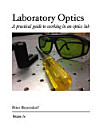Introduction to Quantum Technologies
આ ઇ-પુસ્તક વિશે
This book consists of three parts. The first part looks back over basics of quantum mechanics necessary for the main content, including quantum state and operators, time evolution and perturbation theory. The second part explains in detail key components indispensable to follow quantum technologies: two-level systems, harmonic oscillator and cavity quantum electrodynamics and resonators. In the third part, the physical quantum systems are treated in a more abstract way by introducing quantum logic gates, quantum measurement and quantum error correction. Technical supplements are included in Appendices.
The well-compiled topics and concise presentation feature the book as a supplemental primer in the courses of quantum technologies including quantum computing, quantum communication, quantum sensing and quantum simulation.
લેખક વિશે
Alto Osada is an assistant professor at the Komaba Institute for Science, The University of Tokyo. His current work is concerned with experimental development of individual quantum systems including photons, atomic ions, electrons and superconducting circuits and their hybridization. He received his Ph.D. in Engineering from The University of Tokyo in 2017. After his academic carrier of a project research associate at The University of Tokyo, he became a project assistant in 2019, and has served in the current position since 2022. He is also a PRESTO research Scientist at the Japan Science and Technology Agency (JST) from 2019. He was honored with Inoue Research Encouragement Award for a young researcher from Inoue Foundation for Science and the Young Scientist Award from the Physical Society of Japan in 2019.
Rekishu Yamazaki is an associate professor of physics at International Christian University. His work recently focuses on quantum control in liquid and on quantum optomechanics for development of quantum transducer. He received his Ph.D. in Science from Purdue University in 2006. He was an assistant professor, a research fellow and a project lecturer at the Research Center for Advanced Science and Technology, The University of Tokyo, and during that he served as a PRESTO research scientist at JST in 2014–2018. He has served in the current position since 2019.
Atsushi Noguchi is an associate professor at the Komaba Institute for Science, The University of Tokyo and at the Center for Emergent Matter Science, RIKEN. His work widely involves quantum science and technology including ion and electron traps, superconducting quantum circuits, quantum surface acoustic waves and hybrid quantum systems with superconducting qubits. He received his Ph.D. from Osaka University in 2013. He was appointed as a project assistant professor at The University of Tokyo in 2015 and has served in the current position since 2019. During that, he was also a PRESTO research scientist at JST in 2016–2020. He has also been a research fellow in the Inamori Research Institute for Science Fellowship since 2020. He was honored with the Young Scientist Award from the Physical Society of Japan in 2016 and with the Young Scientist Award from the Ministry of Education, Culture, Sports, Science and Technology (MEXT) in Japan in 2019.







